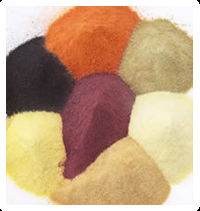Saw Palmetto Purchase & Information

Alternative Names
American Dwarf Palm Tree, Baies du Chou Palmiste, Baies du Palmier Scie, Cabbage Palm, Chou Palmiste, Ju-Zhong, Palma Enana Americana, Palmier de Floride, Palmier Nain, Palmier Nain Américain, Palmier Scie, Sabal, Sabal Fructus, Saw Palmetto Berry
Scientific Name
Serenoa repens
Why Do People Use Saw Palmetto?
Oral preparations of Serenoa repens (Saw-palmetto), like saw palmetto powder, can be used for the treatment of benign prostatic hyperplasia (BPH), a sedative, as a mild diuretic, as an antiseptic and an anti-inflammatory agent. Saw palmetto powder is also used orally to improve sexual vigor, to increase breast size, as an aphrodisiac, for colds, to treat chronic nonbacterial chronic prostatitis, pelvic pain syndrome, irritated mucous membranes, coughs, asthma, sore throat, migraines, chronic bronchitis, to stimulate hair growth and cancer. Saw palmetto is also used orally to protect complications during transurethral resection of the prostate (TURP).
As a combining with other herbs, saw palmetto is utilized to treat prostate cancer.
Vaginally, the powdered fruit is utilized as a vaginal tonic and as a uterine stimulant.
Is It Safe To Use?
Likely Safe - Oral and appropriate consumption of saw palmetto powder was found safe when used in clinical studies up to one year.
Likely Unsafe In Pregnancy & Lactation - Saw palmetto should be avoided in pregnancy and lactation because it has hormonal activity.
How Effective Is Saw Palmetto?
Saw palmetto powder is possibly ineffective for following condition:
• Benign Prostatic Hyperplasia (BPH)
There is insufficient information to rate the safety of Serenoa repens for following conditions:
• Androgenic alopecia (alopecia areata)
• Chronic and Prostatitis pelvic pain syndrome
• Transurethral resection of the prostate (TURP)
How Saw Palmetto Works?
The most effective part of Serenoa repens is the ripe fruit. The lipid portion consists of fatty oils and volatile oil, which are effective for the treatment of benign prostatic hyperplasia (BPH). Numerous saw palmetto containing products are standardized in light of the fatty acid constituent. Most extracts of saw palmetto utilized in clinical studies for benign prostatic hyperplasia (BPH) are berry extract made with lipophilic non-polar solvents containing 80% - 90% free fatty acid. But according to recent analysis, products containing saw palmetto, which are commercially accessible in Europe, demonstrate that the free fatty acid level in these products ranges from around 41% - 81%.
Saw palmetto has antiproliferative, antiandrogenic and anti-inflammatory properties that appear to responsible for enhancing side effects of benign prostatic hyperplasia (BPH). Saw palmetto seems to noncompetitively repress 5 alpha-reductase type1 & 2 and to keep safe from conversion of testosterone to dihydrotestosterone (DHT) in vitro which may diminish the growth of prostate.But 5 alpha-reductase levels in serum testosterone and prostatic tissue, PSA and DHT are not altogether decrease by saw palmetto in vivo. Saw palmetto does not appear to influence general prostate size, however it shrinks the internal prostatic epithelium. Saw palmetto may slow prostate cell expansion by restraining the growth factor of fibroblast and growth factor of epidermal and stimulating apoptosis.
What Are The Side Effects /Adverse Reactions of Saw Palmetto?
The side effects by the oral consumption of saw palmetto are mild and similar to placebo. Cerebral pain, dazedness and gastrointestinal grumblings, for example, nausea, dizziness, constipation, vomiting and diarrhea are the most commonly reported antagonistic effects. Other symptoms reported in clinical trials include headaches, asthenia, ejaculation disorders, loss of libido and postural hypotension.
A mixture of beta-sitosterol and saw palmetto has been related with single reports flatulence, loss of appetite, worsening acne and diarrhea.
There is one case report of cholestatic hepatitis related with the consumption of the multi-ingredient item that includes saw palmetto (Prostata). In another case, a patient who took saw palmetto developed intense pancreatitis and hepatitis. Side effects decreased when saw palmetto was suspended. Upon reuse of saw palmetto symptoms reemerged. This strongly recommends that saw palmetto was the reason for these unfavorable events.
There is also an issue that saw palmetto may have antiplatelet effects and is likely to expand the potential risk of bleeding in a few patients. There is one report of excessive intraoperative bleeding in a patient who took saw palmetto preceding surgery. Bleeding time normalized when saw palmetto was stopped. To date, there are no recorded case of spontaneous bleeding in patients taking saw palmetto powder.
How Saw Palmetto Interacts With Other Herbs and Supplements?
Saw palmetto powder may interact with following herb & supplements:
• Antiplatelet or Anticoagulant Supplements & Herbs
How Saw Palmetto Interacts With Drugs?
Serenoa repens may interact with following drug items:
• Antiplatelet or Anticoagulant Drugs
• Contraceptive Drugs
• Estrogens
How Saw Palmetto Interacts With Foods?
Not known.
How Saw Palmetto Interacts With Lab Tests?
Saw palmetto powder may interact with following lab tests:
• Bleeding Time
• Prostate-Specific Antigen
How Saw Palmetto Interacts With Diseases and Conditions?
Saw palmetto may interact with following diseases or conditions:
• Surgery
What Should Be the Dose/Administration of Saw Palmetto?
ORAL
For the treatment of benign prostatic hyperplasia (BPH), 160 mg should be used twice every day or 320 mg once every day of a lipophilic extract containing 80% - 90% fatty acids.
For androgenic alopecia (alopecia areata), 200 mg of saw palmetto should be consumed two time daily alongside beta-sitosterol 50 mg two times every day.
Comments
Till 1950, saw palmetto tea was a part of in the National Formulary and United States Pharmacopeia. The free fatty acid constituent in these products range from about 41%-81%.
General Certificate of Analysis (COA)
Specification sheet links below are a standard copy of the COA less the batch or lot number and manufactures dates. Specification sheet can be dated and should only be considered as a general information. Please contact and request an up to date COA if needed for specific updated information before placing order by filling out the contact form with product name and SKU number. If ordering quantities of twenty five kilos or more contact for availability.
